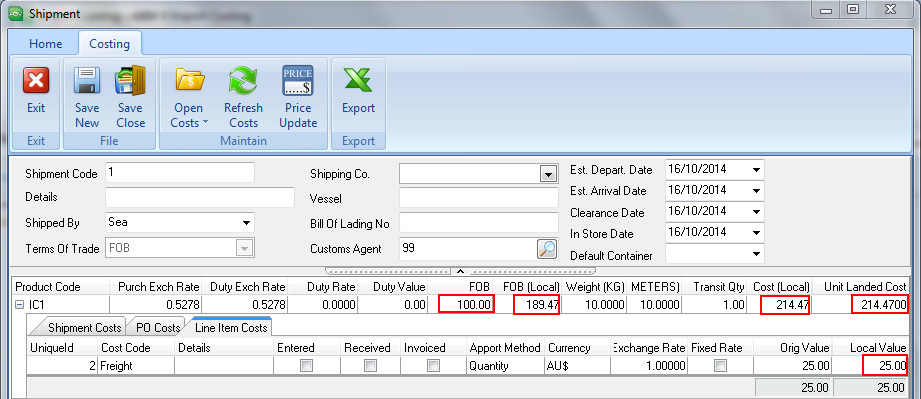Optional Module
Simple Management of Landed on Imported Inventory
When costs are finalized and the goods are received, the shipment is updated and the stock on hand for each product is increased by the goods received and the unit cost used includes the suppliers’ cost plus a proportion of all the landing costs and charges that apply to that shipment.
The shipment information that is stored includes dates for leaving the port, in transit, estimated arrival and actual arrival dates as well as names and reference numbers for each shipment.
Costs incurred can be in a number of different currencies and may need to be allocated using different methods. For example, one cost may be apportioned by the quantity and another may be apportioned by weight. Some products may attract duty while others don’t. Advanced Business Manager’s Import costing program allows for the full range of different options available.
Most Import costing systems only allow you to add purchase orders from one supplier. Advanced Business Manager’s Import costing program allows shipments to be made up of purchase orders regardless of the supplier, allowing you to fill a container with products sourced from more than one supplier and still be able to allocate costs across all goods purchased.

Features
Sundry shipments
A ‘sundry shipment’ option is included to allow stock items to be cost estimated and selling prices set in advance of placing any orders. This allows importers to finalise prices before receiving orders from customers
Track and change
Shipments are automatically assigned a shipment number and stored in a new shipment file for easy cataloguing. Shipments can then be viewed on the shipment routine by nominated supplier. Any existing shipments still in transit are able to be altered at anytime, such as quantity.
Detailed shipments
Shipments are constructed by selecting all or part of detailed items from orders. Additional details relevant to the shipment, such as due dates, exchange rates, country of origin and shipping line may also be entered and stored as a reference for each shipment.
Detailed costing
Shipments are automatically totalled and converted to local currency at an updated exchange rate. Multiple user-defined shipment costs are available and apportioned by quantity, value, weight, volume, percentage or manually.
Analysis
Perform a ‘What if’ analysis to see the effect of changes in exchange rates and shipment costs on the final landed cost prior to processing. Track changes from old costs to new costs and current selling prices as well as the margins based on the new landed cost.
Accounting integration
General/Nominal ledger postings are automatically set up, as well as a supplier invoice for orders. ABM aims to reduce tedious transaction or account entries and retains a history of each shipment for later viewing or reporting.
